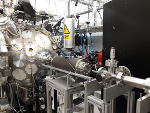| Version 1 (modified by , 7 years ago) ( diff ) |
|---|
"The importance of DNA damage complexity in the radiobiology of proton beam therapy" - Jason Parsons (Liverpool)
- Abstract
- Slides
- Details:
Date: 10 May 2019 Time: 14:00 Venue: The Lecture Theatre of the Chester Beatty Laboratories, 237 Fulham Rd, London SW3 6JB
Abstract
Proton beam therapy (PBT) is a precision radiotherapy technique which is increasingly being used for treatment of solid tumours in the UK through the establishment of new NHS facilities in Manchester, and London (from 2020). Despite this, the Clatterbridge Cancer Centre (CCC) has been routinely treating eye cancer patients for over 20 years. Unlike conventional radiotherapy techniques, PBT delivers the radiation dose directly to the tumour and spares the surrounding normal tissues and organs at risk. However due to the variation in energy deposition via the Bragg peak and increases in linear energy transfer (LET) towards the Bragg peak distal edge, the radiobiological effects of protons still remain poorly understood. Using the PBT facility at the CCC, we’ve demonstrated significant differences in the biological effect of high energy (low-LET) versus low energy (high-LET) protons on cultured cells mediated largely by an impact on DNA damage and repair. In particular we have shown that high-LET protons generate significantly higher levels of complex DNA damage (CDD), containing multiple lesions in close proximity, that enhances cancer cell death in comparison to low-LET protons and x-ray irradiation. We’ve analysed the molecular and cellular response to CDD-induced by high-LET protons and demonstrated that this triggers histone ubiquitylation in chromatin vital for promoting CDD repair. Using an siRNA screening approach, we’ve furthermore identified a key role for the deubiquitylation enzyme USP6 and the DNA repair enzyme PARP-1 in controlling cell survival in response to high-LET protons, and in the use of PARP inhibitors for radiosensitising cancer cells under these conditions.
Attachments (1)
- ICR May 2019.pdf (4.2 MB ) - added by 7 years ago.
Download all attachments as: .zip
